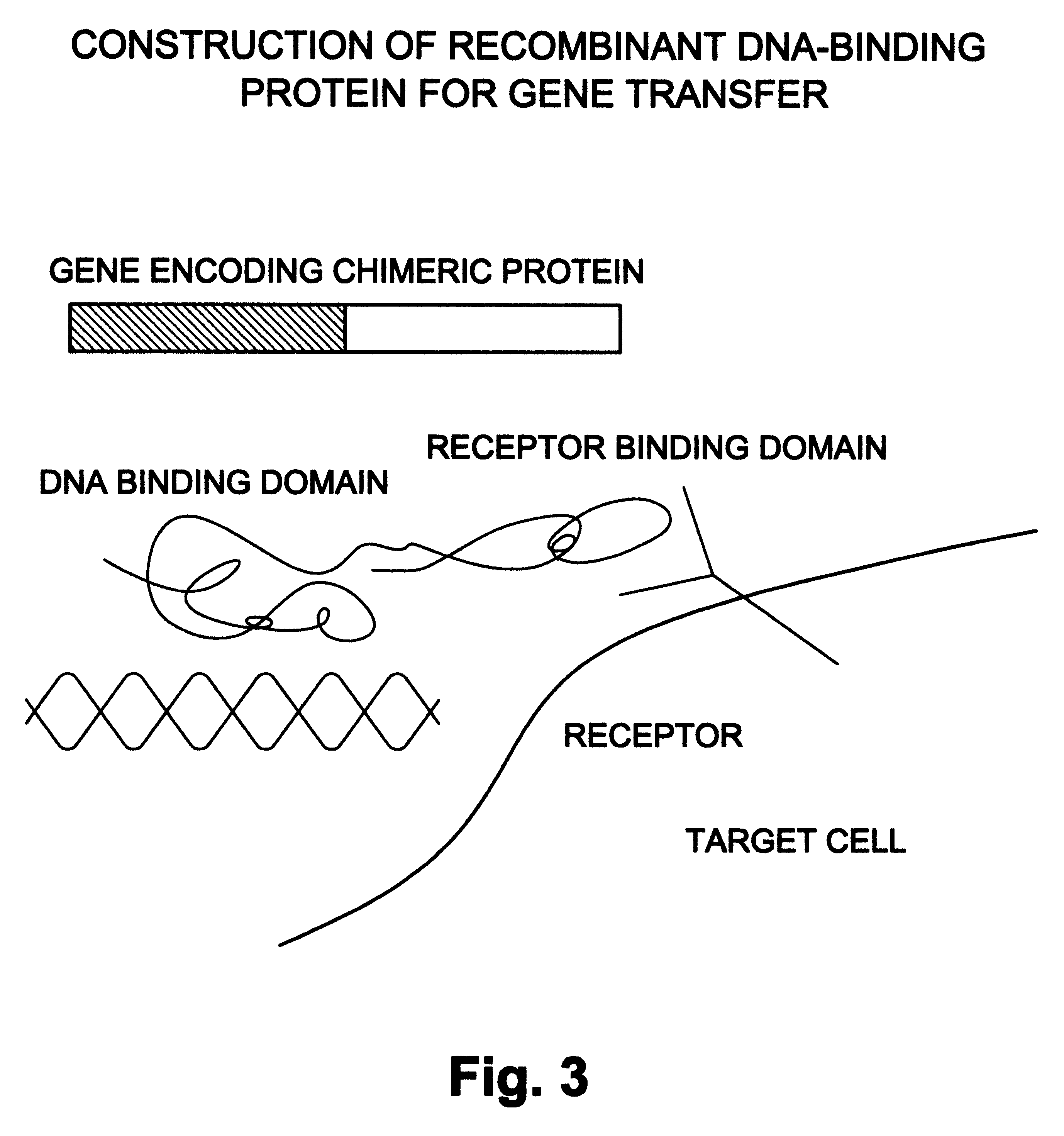Natural or recombinant DNA binding proteins as carriers for gene transfer or gene therapy
a dna binding protein and carrier technology, applied in the field of somatic gene therapy, can solve the problems of limited methods and limited use of microinjection for gene therapy, and achieve the effect of enhancing the entry of dna
- Summary
- Abstract
- Description
- Claims
- Application Information
AI Technical Summary
Benefits of technology
Problems solved by technology
Method used
Image
Examples
example 2
Lactoferrin-DNA Complexes for Oral Gene Therapy
Lactoferrin is normally absorbed from the gut via the epithelial cells. It is normally protected from degradation in the stomach and small intestines by its resistance to acid and protease as well as by forming a complex with lipid micelles in the cream layer of milk. There are several pathways by which lactoferrin may be taken up after oral administration. It may be taken up by receptor mediated endocytosis into the endosome, or it may pass through the intestinal barrier by a transcytotic pathway and enter the general circulation.
For oral gene therapy the lactoferrin DNA-complex is administered orally by itself or in a formulation containing lipids derived from, or similar to, those in the cream layer of milk. DNA bound to the lactoferrin complex is protected from degradation in the stomach and proximal small bowel and pass through the small bowel without dissociation. The complexes reaching the small bowel bind to the lactoferrin rece...
example 3
Parenteral Therapy with Lactoferrin DNA Complexes
Many cell types have receptors for lactoferrin. Parenteral (intravenous) administration of the lactoferrin-DNA complex leads to uptake of this complex in a variety of cell types that have the lactoferrin receptor and are in contact with the vascular space. This provides a relatively non-specific means for introducing DNA into a variety of cells in vivo. Tissue specific gene expression is attained by employing vectors with tissue-specific promoters such that the therapeutic gene is only expressed in cells permissive to that promoter and not other cells which have the lactoferrin receptor.
example 4
Inhalation Therapy with Lactoferrin-DNA Complexes
Lactoferrin-DNA complexes can be administered by inhalation with use of a nebulizer of direct instillation through an endotracheal tube. This complex will bind to receptors on epithelial cells or alveolar cells lining the airways and enhance the efficiency of gene transfer. Large complexes may be endocytosed specifically by alveolar macrophages enabling efficient gene transfer to these cells.
PUM
| Property | Measurement | Unit |
|---|---|---|
| pH | aaaaa | aaaaa |
| cell adhesion | aaaaa | aaaaa |
| voltage | aaaaa | aaaaa |
Abstract
Description
Claims
Application Information
 Login to View More
Login to View More - R&D
- Intellectual Property
- Life Sciences
- Materials
- Tech Scout
- Unparalleled Data Quality
- Higher Quality Content
- 60% Fewer Hallucinations
Browse by: Latest US Patents, China's latest patents, Technical Efficacy Thesaurus, Application Domain, Technology Topic, Popular Technical Reports.
© 2025 PatSnap. All rights reserved.Legal|Privacy policy|Modern Slavery Act Transparency Statement|Sitemap|About US| Contact US: help@patsnap.com



